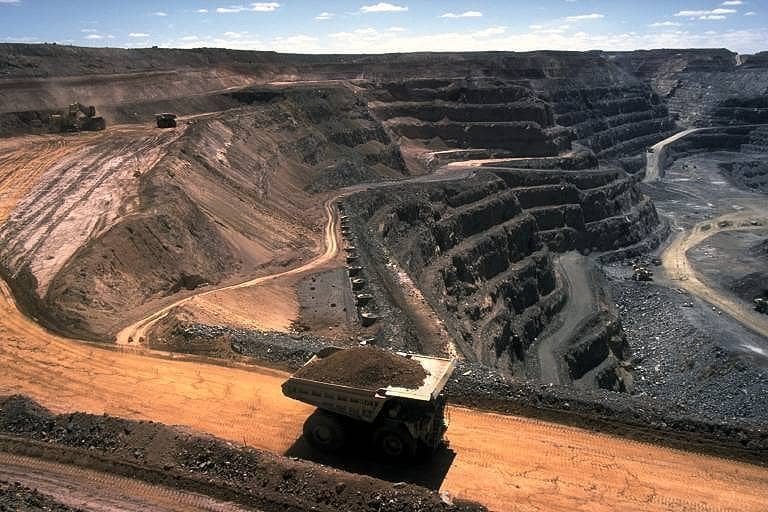What is Mining Engineering?
Mining, within the realm of engineering, involves the extraction of minerals from beneath the surface, within open pits, above, or directly on the ground. This discipline intersects with numerous others, encompassing mineral processing, exploration, excavation, geology, metallurgy, geotechnical engineering, and surveying. A mining engineer oversees various stages of mining operations, encompassing the exploration and discovery of mineral resources, conducting feasibility studies, mine design, planning, production, operations, and ultimately mine closure.
During the mineral extraction process, a certain amount of waste and uneconomic material is generated, serving as the primary source of pollution in mining areas. By their inherent nature, mining activities disrupt the natural environment surrounding the mineral deposits. Therefore, mining engineers must prioritize not only the production and processing of mineral resources but also the mitigation of environmental damage both during and after mining activities, addressing the changes that occur in the mining area. Such industries are subject to rigorous laws aimed at controlling pollution and environmental damage, and are periodically monitored by relevant authorities.
 History of mining engineering
History of mining engineering
Mining has been integral to the existence of humanity, spanning from prehistoric times to the present day. Since the dawn of civilization, individuals have harnessed the resources of stone, ceramics, and later metals found on or near the Earth’s surface. These materials were utilized in the creation of primitive tools and weapons. For instance, flint of superior quality discovered in northern France and southern England was utilized for igniting fires and fracturing rocks. Flint mines were excavated in chalky regions, where underground shafts and galleries followed seams of the stone. The oldest mine recorded in archaeological history is the “Lion Cave” in Eswatini, where paleolithic humans mined hematite, a mineral containing iron, grinding it to produce the red pigment ochre.
The ancient Romans were pioneers in mining engineering. They introduced large-scale mining techniques, such as utilizing vast quantities of water transported to the minehead through aqueducts for hydraulic mining. The exposed rock was then weakened by fire-setting, a process involving igniting fires to heat the rock, which was subsequently quenched with a stream of water. The resulting thermal shock fractured the rock, facilitating its removal. In certain mines, the Romans employed water-powered machinery, such as reverse overshot water-wheels. These were extensively used in the copper mines of Rio Tinto in Spain, where a sequence of 16 such wheels, arranged in pairs, lifted water to a height of approximately 80 feet (24 meters).
The use of black powder in mining commenced in Banská Štiavnica, Kingdom of Hungary (now Slovakia), in 1627. This innovation enabled the blasting of rock and soil, loosening and exposing ore veins at a much faster rate than fire-setting. The Industrial Revolution further propelled advancements in mining technologies, including the development of improved explosives and the introduction of steam-powered pumps, lifts, and drills, all while maintaining safety standards.
.
Education
Becoming a Mining Engineer entails various paths, but a university or college degree remains a prerequisite. Typically, this involves pursuing a Bachelor’s degree in Mining Engineering, such as a Bachelor of Engineering (B.Eng. or B.E.), Bachelor of Science (B.Sc. or B.S.), Bachelor of Technology (B.Tech.), or Bachelor of Applied Science (B.A.Sc.). Depending on the jurisdiction, obtaining a professional license may require a Master’s degree, such as a Master of Engineering (M.Eng.), Master of Science (M.Sc. or M.S.), or Master of Applied Science (M.A.Sc.).
However, some mining engineers have also come from other engineering or science fields like Mechanical Engineering, Civil Engineering, Electrical Engineering, Geomatics Engineering, Environmental Engineering, Geology, Geophysics, Physics, Geomatics, Earth Science, or Mathematics. For these individuals, a graduate degree in Mining Engineering, such as M.Eng., M.S., M.Sc., or M.A.Sc., is typically required after graduating from a different quantitative undergraduate program to qualify as a mining engineer.
The core subjects studied in mining engineering usually encompass a range of disciplines:
- Mathematics, including Calculus, Algebra, Differential Equations, and Numerical Analysis
- Geoscience, covering topics like Geochemistry, Geophysics, Mineralogy, and Geomatics
- Mechanics, focusing on Rock mechanics, Soil Mechanics, and Geomechanics
- Thermodynamics, addressing Heat Transfer, Work (thermodynamics), and Mass Transfer
- Hydrogeology
- Fluid Mechanics, encompassing Fluid statics and Fluid Dynamics
- Geostatistics, including Spatial Analysis and Statistics
- Control Engineering, with Control Theory and Instrumentation
- Surface Mining techniques, such as Open-pit mining
- Underground mining, both for soft and hard rock
- Computing skills, utilizing software like DATAMINE, MATLAB, Maptek (Vulcan), Golden Software (Surfer), MicroStation, Carlson
- Drilling and blasting techniques
- Solid Mechanics, particularly Fracture Mechanics
- By mastering these diverse fields of knowledge, mining engineers are equipped to tackle the challenges of the mining industry effectively.
Ref
Mining Engineering MSc/PgDip – University of Exeter
https://www.exeter.ac.uk/postgraduate/courses/mining-engineering/msc-mining-engineering/
